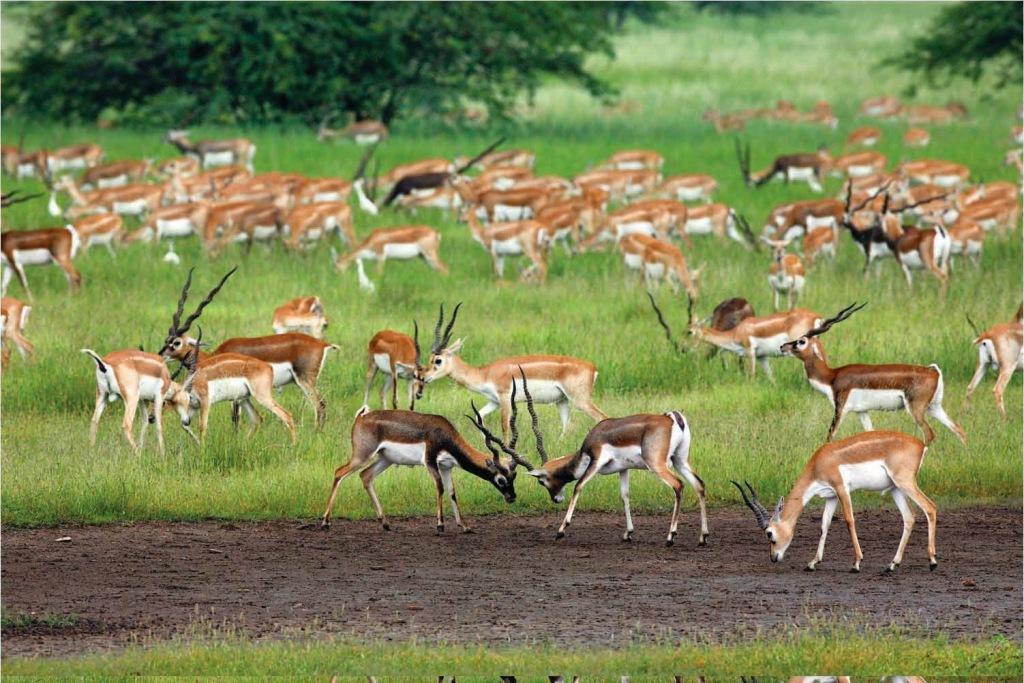Bhubaneswar: When Odisha’s Ganjam was in a state of despair during drought centuries ago, a herd of Indian antelope reached Ganjam district while meandering through forests. The rain that followed, had villagers believe that these are a harbinger of good fortune.

In a quiet corner of Betnai-Balipadar in Ganjam district, villagers have befriended the blackbucks, locally known as Krushnasar Mruga. It started in 1918 when a Briton named Madeshi Chandramani Dora or ‘Green Saheb‘ took the initiative to protect them and published an advertisement in a local daily, prohibiting the killing of these spirally-horned Indian antelopes.
Since then, the villagers have been keen on doing their best to protect the mammals and their efforts have borne fruits if the census reports are anything to go by.

A recent census by the forest division shows 20% increase in the number of blackbucks. Around 4,044 of these Indian antelopes, including 2,086 female, 1,166 male and 554 young ones, are currently being protected by the villagers.
The census reports of 2011 and 2015 also indicate a rise in their number from 2,194 to 3,806.

These mammals are indigenous to the plains of India and have gained popularity due to the uniqueness of male antelope’s horns. Their horns are usually 20-24 inches long, spirally twisted, V-shaped and have striking edges at the apex.
An adult male can be spotted from far away for their prominently bright black-and-white colour. Females and younger males are reddish-yellow in colour.

Primarily grazers, they live in open Savannah and feed on wild/fresh grass, vegetables, crops and tender leaves. In Ganjam, they munch on pastures or gowchara fed to domestic animals. With the onset of summer, the wild grasses pucker up and it is then that they start eating the shoots of all crops listlessly.
The farmers, instead of raising fences and boundaries, are only too happy to have been able to serve these animals, which they consider lucky.
The villagers not only take care of them but also aid the injured and tie tinkling bells around their necks.

In 1997, a group of 20 villagers set up the Ganjam District Blackbuck Protection Committee for the conservation of this wildlife species. They had also won the first Biju Patnaik Award for Wildlife Conservation in 2004-05.
As per officials, the growth in the number of blackbucks, gregarious in nature, is due to improved habitat, protection from locals and forest staff, and absence of predators such as tigers in that area.


Comments are closed.